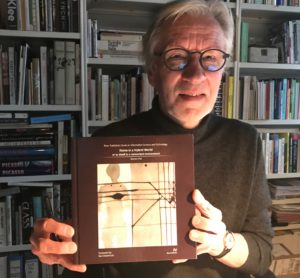For some two years now I have worked on a book about the triple theme of housing, technology and architecture; in particular focusing on the – sometimes complicated – issues caused by the fact that times are changing and our built environment, where it concerns housing, does not adapt. Housing is considered a traditional safe-haven, a protected private space in which we feel unseen. I believe this is no longer a realistic situation; we live – in Floridi’s words – in an infosphere, it is becoming complicated to withdraw from being connected, being part of an increasingly hybrid world. This book is written to discuss the problematic situation in which (Dutch) housing is for some 50 years.
The book will be published as an open-access book at RIVER Publishers early October 2020; for now the most interesting ‘Foreword‘ by Kas Oosterhuis is already accessible. I already would like to thank all who have contributed and/or participated in this book; I owe them for their comments and critical reviews. Also; many thanks to `Antony Gormley for his willingness to make one of his fine images available for the cover. Furthermore: thanks to Carlijn Kingma, Marwan Rechmaoui and Rob Voerman for their fine images elsewhere in the book.




